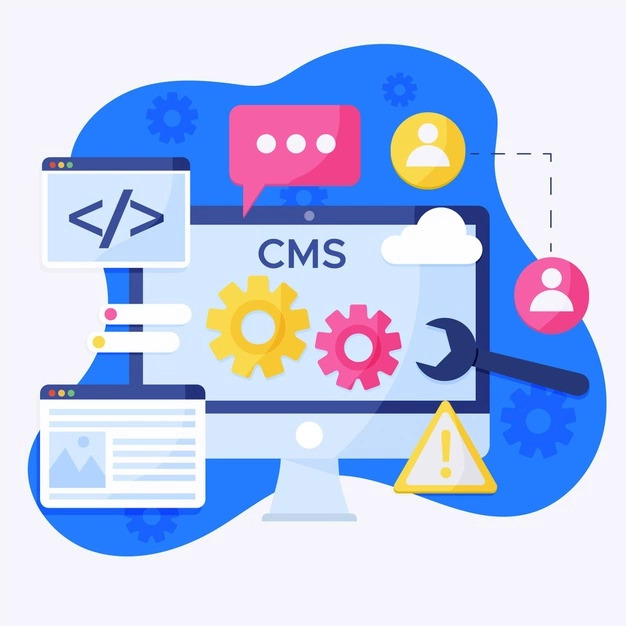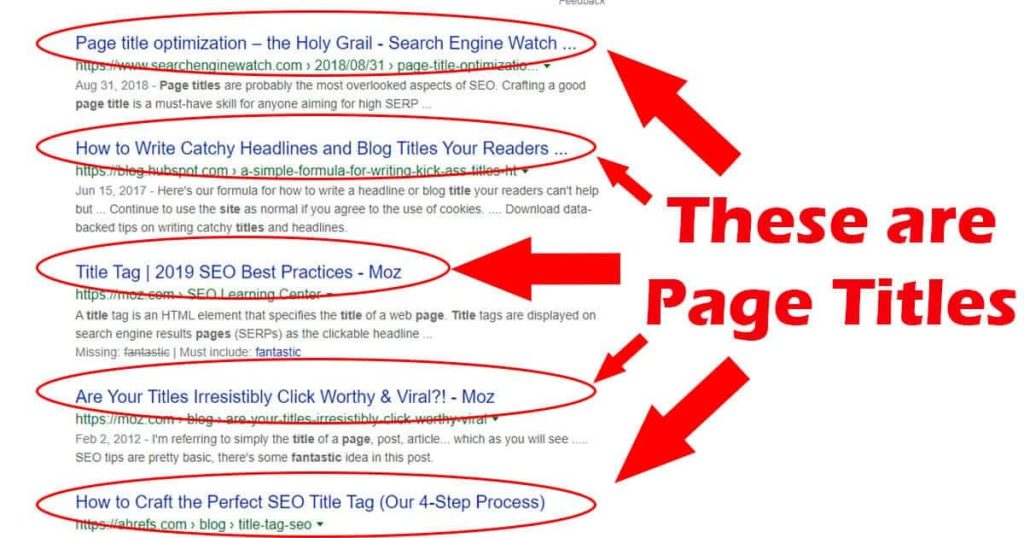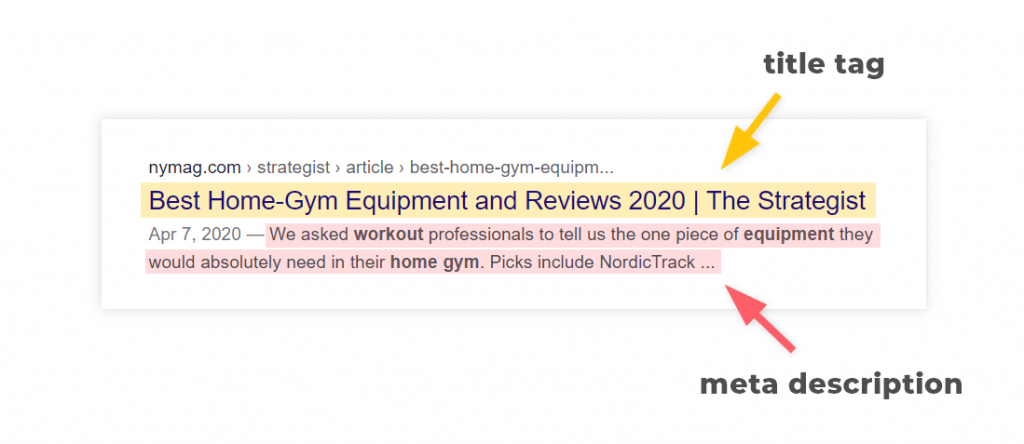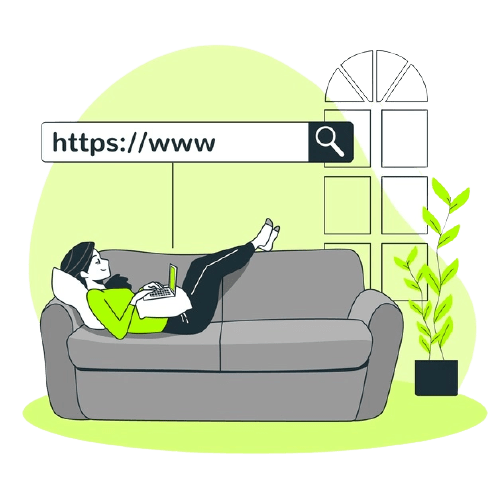On-Page SEO Strategy Based on a recent report, more than 95% of the online search traffic is from the first page of the search engine results. In the search engines such as Google, Yahoo, and Bing, the top 5 results of the search get more than 75% of the clicks.
When you are looking to find your business in the top search results, then it is important to optimize the pages accordingly. On-page Search Engine Optimization or SEO is considered the basic attribute that helps you to easily achieve qualified leads.
The On-Page SEO Strategy is a suitable option for helping your business site reach the top position. On-page SEO is the component of SEO, especially focusing on optimizing the elements on the website, such as keyword density, page speed, HTML elements, and many other factors like Backlinks.
Why is On-Page SEO Important?
On-page SEO also called on-site SEO, is mainly the practice of optimizing the WebPages for specific keywords. These increase search visibility along with web traffic. On-page SEO increases the better aligning of page-specific elements such as title tags, internal links, headings, and many more.

On-page SEO acts as an important attribute for the website to easily get optimized based on the requirement of the search engine such as Google and many other search engines. On-page SEO helps your site to be well optimized for search engine bots as well as for human eyes.
Normally, the Google search algorithm is user-focused and accesses the top on-page SEO sites. On-site SEO especially enables the search engines to easily understand content to rank relevant URLs even for specific queries. The On-Page SEO plays an important role in
- Ranking higher in the SERPs
- Improved Local Search
- Increases the Conversion Rate
- Boosting Organic Traffic
- Earning better potential
- Improves the CTR
- Integrates the relevant keywords
- Optimizes images
- Improves site load time
The Most Important 10 On-Page SEO Elements
#1 High-Quality Page Content
For any webpage, page content plays an important role in attracting viewers. On-page SEO works on increasing the page content with the relevant keywords along with topics.

Page content shows the readers and search engines what the website is all about. Conducting appropriate keyword research with searching on Google is helpful for finding the best relevant keyword. There are many tools such as Ahrefs, AnswerthePublic, and UberSuggest are available.
Make your content readable as well as engaging so that it gains more attraction.
Also, Get the Top 5 Reasons That Your Business Needs Local SEO In 2024 |
#2 Page Titles
Website page titles or title tags are considered the most important elements of the website. These are mainly based on the browser window along with the SERPs.
Page title optimized based on the SEO requirement is a perfect option for the title tag. Title Tag is mainly located with <title> element along with the page’s HTML. Titles mainly show the visitors and search engines what they could find on the pages. Be specific about the page title so that readers can view them.

On-Page SEO Strategy It is important to ensure that your site gets ranked in the top position with the focus keyword. To get better page visibility, it is better to incorporate keywords on the page title naturally.
Keeping the page title under 70 characters is efficient. Normally, mobile search results could show a maximum of 78 characters.
- Page title need to be unique
- Be specific on the title
- Be compelling
- Pay attention to the length
- Include your primary keyword
- Don’t put the company name in front
- Don’t be repetitive in the title
- Write for the user
#3 Headers
The Headers are body tags mainly referred to as the HTML element. These HTML elements includes the <h1>, <h2>, <h3>, and more. The header needs to have tags that help to organize the content suitable for the reader easily.
These also help the search engine to easily distinguish the part of content. It needs to be relevant based on the search intent. Following this, An Page SEO Strategy would be suitable for easily gaining more web traffic and attaining a top position in the search engine results.

For achieving the on-page SEO headers, it is quite important to have keywords in the headers. Choosing from the different ones from the page title is quite efficient. Adding the important keywords in the HTML elements such as h1> and <h2> headers are suitable option.
- Provides quick information about your document
- Helps to set different parts of the document
- Displays descriptive information
Also, Get Best Practices To Rank High On Google My Business In 2024 |
#4 Meta Descriptions
The Meta Descriptions are considered as short page descriptions under the Title in the search results. Normally, the Meta Descriptions are not the official ranking factor in the search engine, but they could easily influence whether the page is clicked or not.

Meta descriptions could be easily copied over social media when the content is shared. This On-Page SEO Strategy mainly encourages click-throughs for the user.
Meta description has the power to easily increase the click-through rate in organic search results. When more people see your page in search results, then it would automatically increase the search traffic.
- Keep Meta Descriptions under 160 characters.
- Maximum 220 characters can be used.
- Mobile devices reduce your Meta Descriptions at 120 characters
- Use a compelling sentence
- Add keyword or keyword phrase
- Avoid alphanumeric characters such as —, &, and +
#5 Image Alt-text
Image Alt-text is quite similar to that of the SEO for the images. Image alt-text is normally the written copy that would appear when the image on the website fails to load under any circumstances.
Normally, this text would be suitable for helping screen-reading tools for describing the images visually impairing the readers.

These also extensively allow the search engines to easily have a better crawl on the website. It would be a suitable option for ranking your website in the top place. Google delivers image-based results quite similar to text-based results.
People may discover your site through your images. Follow the below strategy for adding the Image Alt-text.
- Add descriptive
- Be specific
- Make it contextually relevant to a broader page
- Keep the text shorter than 125 characters
- Use keywords
- Don’t keyword stuff
#6 Structured Markup
The Structured Markup is mainly considered as the structured data that involves “marking up” website source code. These are suitable options for the search engine to easily crawl and display the content accordingly.
Structured data is more efficient to communicate in the search engine the data. Structured Markup is mainly considered as the key behind these knowledge panels and featured snippets.

When you do a quick search for something on Google, then this Structured Markup shows the appropriate solution. On-Page SEO Strategy is a suitable option for enabling specific page information for sharing content on social media. To add Structured Data to a Website, follow the below steps
- Choose your data type.
- Select the URL
- Highlight page elements
- Add the data tags
- Create HTML
- Choose schema markup to the page
- Test your markup
- Use Google’s Structured Data Testing Tool for testing the markup
#7 Page URLs
The Page URLs Uniform Resource Locator in the webpage. These URLs are mainly based on location in the specific website, file, and page on the internet. Every URL in the webpage is mainly made up of multiple parts with a variety of effects like security.

It is quite important to keep the site hierarchy consistent when you are creating blog posts, subpages, or internal pages. Below are the tips for writing SEO-friendly URLs
- Use 1 or 2 keywords
- Remove the extra and unnecessary words
- Use HTTPS
- Google now uses HTTPS as a positive rank
#8 Internal Linking
Internal linking is a unique process of hyperlinking WebPages. Internal linking plays an important role in on-page SEO. These internal links mainly send the readers towards other pages on the website.

These are a suitable option for keeping them around longer. It tells Google about the valuable attributes of the site. When the webpage is visited for a longer time, then it would be suitable for Google to easily crawl and index the site. Also, Get Google My Business – An Expert Interview |
#9 Mobile Responsiveness
Top search engines such as Google increases the ranking of the site optimized with faster mobile speeds. Mobile responsiveness plays an important role in the On-Page SEO Strategy for easily gaining better solutions.

Choosing the best website hosting service, theme, along site design is most important for gaining the navigable and readable in the mobile.
#10 Site Speed

Speed of the WebPages plays an important role in gaining user satisfaction. Google mainly cares about user experience first. When your site speed is increased, it is more likely to be visited by more people. Site speed creates a greater impact on conversions and ROI.
- Reduce render-blocking JavaScript
- Remove the redirects
- Add compression
- Use content distribution network
- Optimize the images
- Leverage browser caching
- Increase server response time
Also, Get Local SEO: A Quick Guide to Improve Your Local Search in 2024 |
Conclusion:
On-Page SEO Strategy involves optimizing front-end and back-end components in the website. The main goal of On-Page SEO is to optimize the website to increase ranking in the search engine.
Following the above steps helps to increase your site visibility.
Feedback
On-Page SEO Strategy lets to control your webpage ranking and visibility.
Trackbacks/Pingbacks